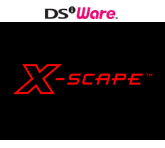
Wario is a character in Nintendo's Mario video game series that was designed as an arch-rival to Mario. Wario first appeared as the main antagonist and final boss in the 1992 Game Boy game Super Mario Land 2: 6 Golden Coins. His name is a portmanteau of the name Mario and the Japanese word warui, meaning "bad". Hiroji Kiyotake designed Wario and Charles Martinet voiced the character from 1993 to 2023, as well as other characters in the series, including Mario, Luigi, and Waluigi.

Pikmin 2 is a 2004 real-time strategy puzzle video game developed and published by Nintendo for the GameCube home video game console. It is the direct sequel to the 2001 game Pikmin and the second game in the Pikmin series. In the game, Olimar returns to the Pikmin planet to collect valuable treasure after learning that the company he works for—Hocotate Freight—is on the verge of bankruptcy.

X is a 1992 space combat simulation video game developed by Nintendo and Argonaut Software and published by Nintendo for the Game Boy in Japan. The player assumes the role of the VIXIV starship as it must protect the planet Tetamus II from a mysterious race of aliens. Gameplay involves completing missions assigned by the "Training Academy Coach", ranging from protecting bases from enemy fire or delivering cargo to a certain area.
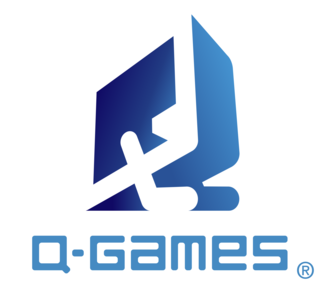
Q-Games, Limited is a video game developer based in Nakagyō-ku, Kyoto, Japan which works closely with both Nintendo and Sony.

The Nintendo DSi is a dual-screen handheld game console released by Nintendo. The console launched in Japan on November 1, 2008, and worldwide beginning in April 2009. It is the third iteration of the Nintendo DS, and its primary market rival was Sony's PlayStation Portable (PSP). The fourth iteration, entitled Nintendo DSi XL, is a larger model that launched in Japan on November 21, 2009, and worldwide beginning in March 2010. Development of the DSi began in late 2006, and the handheld was unveiled during an October 2008 Nintendo conference in Tokyo. Consumer demand convinced Nintendo to produce a slimmer handheld with larger screens than the DS Lite. Consequently, Nintendo removed the Game Boy Advance (GBA) cartridge slot to improve portability without sacrificing durability.

Prehistorik Man is a platforming video game for the Super Nintendo Entertainment System developed by Titus Interactive and published by Kemco in Japan in 1995 as P-Man and by Titus France elsewhere in 1996. It is a sequel to Prehistorik 2, featuring similar graphics but a richer and different story, and additional non-player characters which, among other things, provide hints and a tutorial.

Picopict, known as Pictobits in North America and as Pictopict in Australia, is a puzzle video game developed by Skip Ltd. and published by Nintendo for the Nintendo DSi's DSiWare digital distribution service. It is one of seven games released for the DSi's Art Style series of video games. It was announced on January 26, 2009, was released two days later alongside Somnium, another Art Style game, and was released in North America and PAL regions in the same year, on May 18 and May 22 respectively. In Picopict, players use the touchscreen to move coloured blocks into a formation, such as a four-block line or a 2x2 square. This contributes to an 8-bit image, which consist of various Nintendo Entertainment System (NES) characters, such as Mario, Link, and Bowser.

Need for Speed: Nitro is a racing video game and the fourteenth title of the Need for Speed series. It was published by Electronic Arts for the Wii and Nintendo DS platforms. It is also one of only two games in the franchise to date to not be made for PC and the only game of the franchise to be released only for Nintendo consoles. It was announced in January as part of a three-game announcement that includes Need for Speed: Shift and Need for Speed: World. The game was developed by EA Montreal who have previous experience with Nintendo titles, although the DS version was developed separately by Firebrand Games' Florida studio. An improved version of the DS edition of the game, Need for Speed: Nitro-X, was released for DSiWare on November 26, 2010.

Mr. Driller W is a 2009 puzzle video game developed and published for the WiiWare service by Namco Bandai Games. The eighth entry in the Mr. Driller series, gameplay revolves around clearing each level by destroying, or "drilling", large formations of colorful blocks. Players have an oxygen meter that acts as a time limit, and constantly depletes; air is replenished by collecting air capsules, and is depleted further by destroying brown "X" blocks.
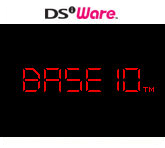
Code, known as Base 10 in North America and Decode in Japan, is a puzzle video game developed by Skip Ltd. and published by Nintendo for the Nintendo DSi's DSiWare digital distribution service.

Aquia, known as Aquite in Europe and Aquario in Japan, is a puzzle video game developed by Skip Ltd. and published by Nintendo for the Nintendo DSi's DSiWare digital distribution service. It was released at the launch of the Nintendo DSi and DSiWare service on April 5, 2009 in North America.

Mighty Flip Champs! is a puzzle-platform game, developed and published by WayForward Technologies for the Nintendo DSi's DSiWare digital download service. It was released on June 1, 2009, in North America and on November 27 in the PAL regions. The developers took inspiration from multiple sources, including the video games Wendy: Every Witch Way and The Legend of Zelda: A Link to the Past. In it, players control Alta, a girl who has to reach a fishman by flipping between areas until she can reach him. Since its release, Mighty Flip Champs! received all-around positive reception, while also being called one of the best video games for the DSiWare service. It is the first game in the Mighty series, and is followed by Mighty Milky Way, Mighty Switch Force! and Mighty Switch Force! 2.
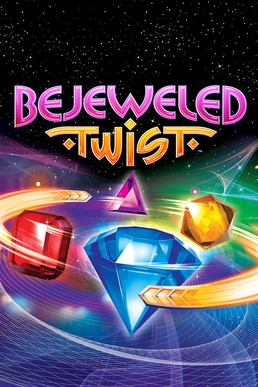
Bejeweled Twist is a tile-matching puzzle video game developed and published by PopCap Games. It is the third game overall and first spin-off game in the Bejeweled series, as well as being the first PopCap title to be released in high definition and feature widescreen support.

The Nintendo DSi system software is a set of updatable firmware versions, and a software frontend on the Nintendo DSi video game console. Updates, which are downloaded via the system's Internet connection, allow Nintendo to add and remove features and software. All updates also include all changes from previous updates.

Intersect, known as Digidrive in North America and Japan, is a puzzle video game developed by Q-Games and published by Nintendo for the Game Boy Advance in 2006 exclusively in Japan. It is the only game in the bit Generations series to not be developed by Skip Ltd. It was later re-released for the Nintendo DSi's DSiWare digital distribution service, where it was released outside Japan for the first time.

The Oregon Trail is a strategy video game developed by Gameloft New York and Gameloft Shanghai and published by Gameloft. It was released for Java ME-based mobile phones in 2009; a high-definition version was later released for iOS the same year. The game was then ported to DSiware, followed by a number of other mobile operating systems and devices. The game was followed by two sequels: The Oregon Trail: Gold Rush and The Oregon Trail: American Settler.
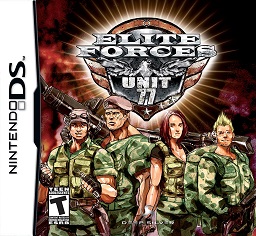
Elite Forces: Unit 77 is an action video game developed by Spanish studio Abylight and Gammick Entertainment for the Nintendo DS and DSiWare.
Giles Goddard is an English video game programmer. He was one of the first Western employees at Nintendo, programming the Mario face in Super Mario 64, and working on titles such as Star Fox, 1080° Snowboarding, and Steel Diver. In 2002, he founded Vitei, a video game developer based in Kyoto, Japan, for which he serves as CEO.
